第112章
I could find no explanation of the circumstance, and, my men being all ashore, I turned in again and slept until morning.Ithen found my poultry loose about the canoe, and a large rent in the bottom of the hen-coop, which was about two feet from the surface of the water-- a couple of fowls were missing.Senor Antonio said the depredator was a Sucuruju (the Indian name for the Anaconda, or great water serpent--Eunectes murinus), which had for months past been haunting this part of the river, and had carried off many ducks and fowls from the ports of various houses.I was inclined to doubt the fact of a serpent striking at its prey from the water, and thought an alligator more likely to be the culprit, although we had not yet met with alligators in the river.
Some days afterwards, the young men belonging to the different sitios agreed together to go in search of the serpent.They began in a systematicmanner, forming two parties, each embarked in three or four canoes, and starting from points several miles apart, whence they gradually approximated, searching all the little inlets on both sides the river.The reptile was found at last, sunning itself on a log at the mouth of a muddy rivulet, and despatched with harpoons.I saw it the day after it was killed; it was not a very large specimen, measuring only eighteen feet nine inches in length, and sixteen inches in circumference at the widest part of the body.I measured skins of the Anaconda afterwards, twenty-one feet in length and two feet in girth.The reptile has a most hideous appearance, owing to its being very broad in the middle and tapering abruptly at both ends.It is very abundant in some parts of the country; nowhere more so than in the Lago Grande, near Santarem, where it is often seen coiled up in the corners of farmyards, and is detested for its habit of carrying off poultry, young calves, or whatever animal it can get within reach of.
At Ega, a large Anaconda was once near making a meal of a young lad about ten years of age, belonging to one of my neighbours.
The father and his son went, as was their custom, a few miles up the Teffe to gather wild fruit, landing on a sloping sandy shore, where the boy was left to mind the canoe while the man entered the forest.The beaches of the Teffe form groves of wild guava and myrtle trees, and during most months of the year are partly overflown by the river.While the boy was playing in the water under the shade of these trees, a huge reptile of this species stealthily wound its coils around him, unperceived until it was too late to escape.His cries brought the father quickly to the rescue, who rushed forward, and seizing the Anaconda boldly by the head, tore his jaws asunder.There appears to be no doubt that this formidable serpent grows to an enormous bulk, and lives to a great age, for I heard of specimens having been killed which measured forty-two feet in length, or double the size of the largest I had an opportunity to examine.The natives of the Amazons country universally believe in the existence of a monster water-serpent, said to be many score fathoms in length and which appears successively in different parts of the river.They call it the Mai d'agoa--the mother, or spirit, of the water.This fable, which was doubtless suggested by the occasional appearance of Sucurujus of unusually large size, takes a great variety of forms, and the wild legends form the subject of conversation amongst old and young, over the wood fires in lonely settlements.
August 6th and 7th--On leaving the sitio of Antonio Malagueita we continued our way along the windings of the river, generally in a southeast and south-southeast direction, but sometimes due north, for about fifteen miles, when we stopped at the house of one Paulo Christo, a mameluco whose acquaintance I had made at Aveyros.Here we spent the night and part of the next day, doing in the morning a good five hours' work in the forest, accompanied by the owner of the place.In the afternoon of the 7th, we were again under way; the river makes a bend to the east-northeast for a short distance above Paulo Christo's establishment, and then turns abruptly to the southwest, running from that direction about four miles.The hilly country of the interior then commences, the first token of it being a magnificently-wooded bluff, rising nearly straight from the water to a height of about 250 feet.The breadth of the stream hereabout was not more than sixty yards, and the forest assumed a new appearance from the abundance of the Urucuri palm, a species which has a noble crown of broad fronds with symmetrical rigid leaflets.
We reached, in the evening, the house of the last civilised settler on the river, Senor Joao (John) Aracu, a wiry, active fellow and capital hunter, whom I wished to make a friend of and persuade to accompany me to the Mundurucu village and the falls of the Cupari, some forty miles further up the river.I stayed at the sitio of John Aracu until the 19th, and again, in descending, spent fourteen days at the same place.The situation was most favourable for collecting the natural products of the district.